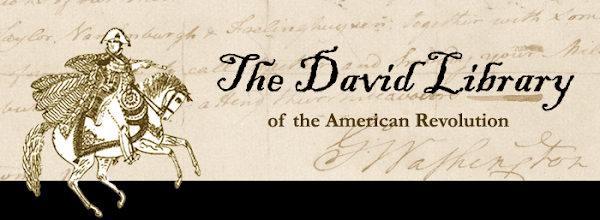 |
| Brianna Heverly |
Although the American Revolution was fought by an army of
men, women played a crucial role in fighting for independence against the
British. Women worked together to
provide men with food, clothing, shelter, and support -- all necessary to win the war. Without these essentials, often provided
women in the role of camp followers, the Continental Army would not be equipped
enough to fight the British and win the war.
One of the
most known women of the American Revolution is Margaret Cochran Corbin,
otherwise known as “Captain Molly,” or Molly Pitcher. Captain Molly is recognized for taking over
charge of the cannon after her husband was wounded. She bravely fought until she was injured, but
her legacy lives on. Other women were
involved in the war even though they never fired a shot. They were brave enough to follow their
husbands to war to cook food for the soldiers to eat and sew clothing for them
to be protected from the elements. Some women
also followed the men into battle and would bring them water while they
fought. Although some of the women who
were involved in the war were those who wanted to be with their husbands, there
were still many others involved who did not have a husband or relative whom
they followed.
Continental
Army soldiers recognized the importance of women. In a diary of a soldier I came across at the
David Library, the soldier recognized the importance of women who nursed
injured soldiers and saved lives. Other
officers, such as Lieutenant John Charles Philip von Krafft, showed appreciation
to women who opened their homes to provide shelter as the men were
travelling. Von Krafft relied on women
to offer their homes to soldiers in order to escape the harsh elements. Another soldier, Joseph Plumb Martin, stated,
“The women in Pennsylvania, taken in general, are certainly very worthy
characters… [and were] well treated by them.”
Despite the fact that paper was scarce during the war, these soldiers
took the time and paper to write, in letters and diaries, about these women and
their roles in the war.
The David
Library of the American Revolution has an abundance of sources about the role
of women in the Revolutionary War, including secondary source books about women
being camp followers. One of these,
Women Patriots of the American Revolution by Charles E. Claghorn, provided a
detailed list of women who lived during the Revolution. Next to each woman’s name was a brief
one-line summary of her contribution and/or connection to the war. If there was greater detail for a particular
woman, a greater in-depth description of her would be found in the heart of the
book. From these secondary sources, I
gathered that most women in the war were typically nurses, made clothing,
cooked the food, provided housing for the soldiers, and delivered messages. Some women even fought in battle by either
dressing up as a man or taking their husband’s place on the battlefield.
The David Library is first and
foremost a primary source library, and I found multiple primary resources,
including diaries of Continental Army soldiers, which supported the claims the
books made.
To find the
sources I needed, I used the catalogue on the David Library’s website. It’s easy to use and is organized in such a
way that allows for different kinds of searches. For example, because there are so many types
of sources at the David Library, such as books, pamphlets, microfilm, journals,
and so on, the catalogue allows the researcher to narrow their search to
exactly what they want and where in the library they will find it. If the user is still not sure, they can do a
broad search of the subject or title and find sources in all of these
categories. The catalogue includes short
descriptions of the books in the collection, which can help the user determine
whether or not the source is suitable for his or her research.
The David Library’s collections
hold an abundance of sources, fostering the thoroughness and reliability of any
project a researcher might undertake on the era of the American Revolution.
-----------------
Sources consulted for this blog post:
Blumenthal, Walter Hart. Women
Camp Followers of the American Revolution
Claghorn, Charles E. Women
Patriots of the American Revolution: a biographical dictionary
Compiled by: Cooke, Denis J. “17 Voices: The Diaries of Events and
Occurrences Surrounding the British Occupation of Philadelphia”
Mayer, Holly A. Belonging
to the Army: camp followers and community during the American Revolution
Rees, John. “… the
multitude of women” An Examination of
the Numbers of Female Campfollowers With the Continental Army
Rees, John. “The
proportion of Women which ought to be allowed…”
An Overview of Continental Army Female Camp Followers
Sowers, Betty. Campfollowing:
a history of the military wife
Young, Philip. Revolutionary
ladies

